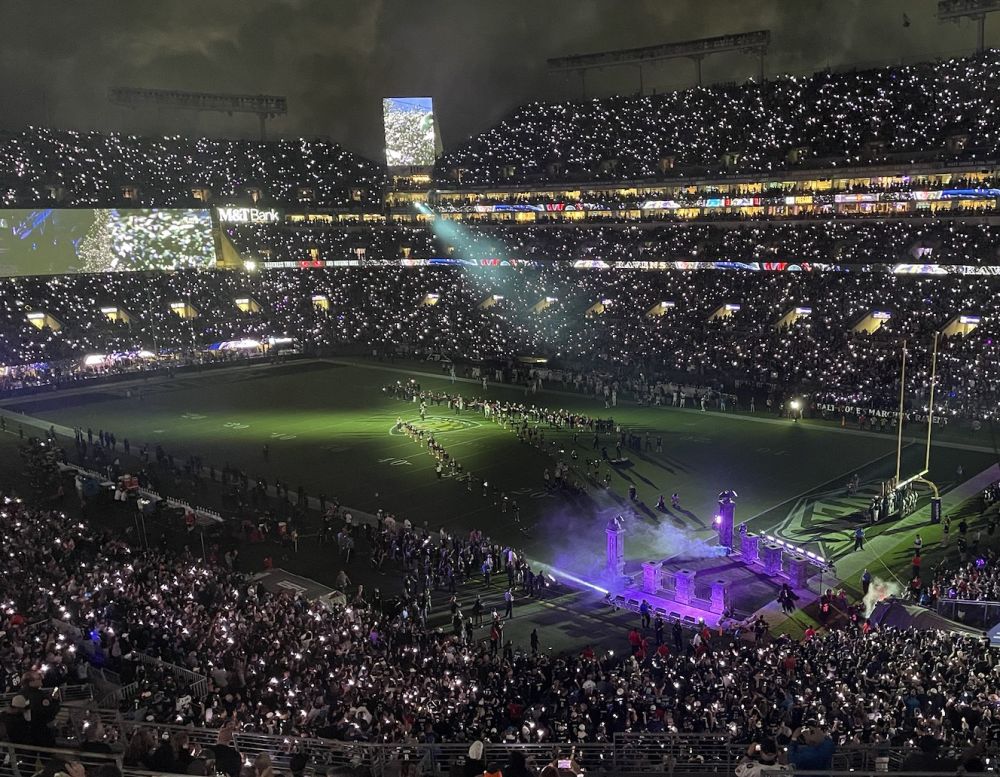Players missing games for health reasons took on new meaning in 2020 with the NFL playing an entire season in the midst of the COVID-19 pandemic.
Despite a massive virus outbreak that sidelined a slew of players headlined by star quarterback Lamar Jackson and forced a Thanksgiving meeting with Pittsburgh to be postponed three times, the Ravens continued their recent overall trend of being among the healthier teams in the league. Baltimore finished 2020 with 12 players on injured reserve, but just three — cornerback Tavon Young, left tackle Ronnie Stanley, and tight end Nick Boyle — were projected to play extensive snaps at the start of the season.
Despite his infamous role in the outbreak that resulted in a suspension, head strength and conditioning coach Steve Saunders has received much credit for revamping the team’s training methods and programs since his arrival in 2016. The previous season, the Ravens were ravaged by injuries and finished 5-11, the only losing campaign of the John Harbaugh era.
“The results speak for themselves when you look at how far we’ve come in the last five years with injury prevention,” said Harbaugh about Saunders’ influence earlier this month. “We were a very strong, physical team at the end of the year production-wise, performance-wise, and we’ve been a healthy team as well. I think that goes to how hard our guys work.”
You typically see the number of players on IR cited in these types of injury assessments, but that alone doesn’t provide a particularly insightful comparison from team to team. How many injuries were to starters compared to rotation players, special-teams contributors, or training camp bodies who had no chance of making the team before getting hurt? How many went to IR at the end of the preseason as opposed to the final weeks of the regular season? And how do you assess teams that had more individuals playing through injuries than those with cleaner health reports most weeks?
Football Outsiders uses a metric called adjusted games lost to try to quantify how much teams were stricken with injuries. Instead of simply counting the number of games lost for each player on IR, the metric weighs the projected role of each injured player — starter, key reserve, bench-warmer, etc. — and also considers those listed on weekly injury reports who ended up playing at less than 100 percent. In other words, the metric won’t treat the absence of a Pro Bowl player or starter the same as a developmental player who was stashed on IR and also considers those players battling through injuries that could impact their performance.
The Ravens had the eighth-fewest adjusted games lost in 2020, whether counting or excluding absences related to the virus. As you’d expect after the critical November losses of Stanley and Boyle at positions lacking depth, Baltimore was hit harder on offense, finishing 16th in fewest adjusted games lost on that side of the ball. Meanwhile, the defense was mostly spared from a long-term perspective and had the sixth-fewest adjusted games lost in the NFL with Young being the only major contributor to miss more than five games and the Ravens being deep at the cornerback position anyway. For some context, the 2019 Ravens finished with the fewest adjusted games lost on offense and the second most on defense, leading to a middle-of-the-pack finish in the overall metric.
You’ll always find some outliers, of course, but this metric’s correlation with success is tough to ignore with Super Bowl champion Tampa Bay finishing with the fewest adjusted games lost in the NFL and 10 of the 13 teams with the fewest finishing with a 10-6 record or better last season. Meanwhile, nine of the 10 teams with the most adjusted games lost missed the postseason with 7-9 Washington being the exception.
“Next man up” remains a popular rallying cry when trying to overcome injuries, but there are only so many a team can endure before reaching a breaking point. That certainly appeared to happen with the depleted Kansas City offensive line in Super Bowl LV after left tackle Eric Fisher tore his Achilles tendon in the fourth quarter of the conference championship game two weeks earlier.
The Ravens will try to continue their run of favorable health in 2021 while the NFL will hope the upcoming season isn’t impacted by the pandemic to nearly the same degree as last season.
Below is a look at where the Ravens have finished in Football Outsiders’ adjusted games lost metric in recent years:
2020 — 59.6 (eighth fewest in NFL)
2019 — 68.7 (16th fewest in NFL)
2018 — 29.7 (fewest in NFL)
2017 — 101.6 (sixth most in NFL)
2016 — 62.0 (11th fewest in NFL)
2015 — 96.1 (third most in NFL)
2014 — 52.6 (seventh fewest in NFL)
2013 — 49.8 (ninth fewest in NFL)
2012 — 57.4 (13th fewest in NFL)
2011 — 18.8 (fewest in NFL)
2010 — 50.9 (15th fewest in NFL)
2009 — 28.8 (seventh fewest in NFL)
2008 — 95.0 (third most in NFL)



























